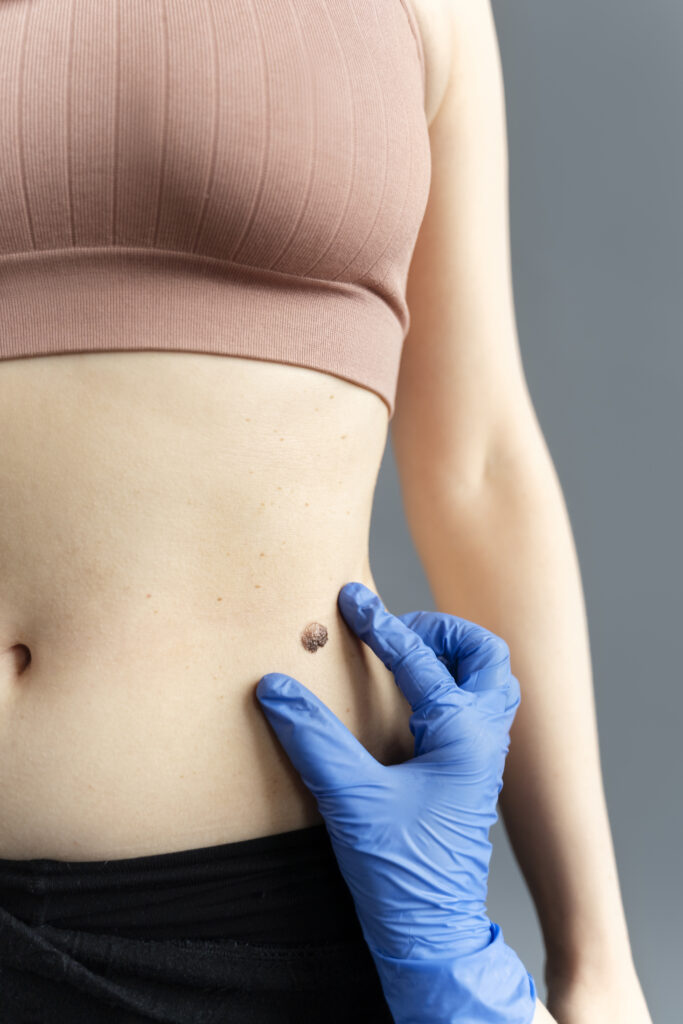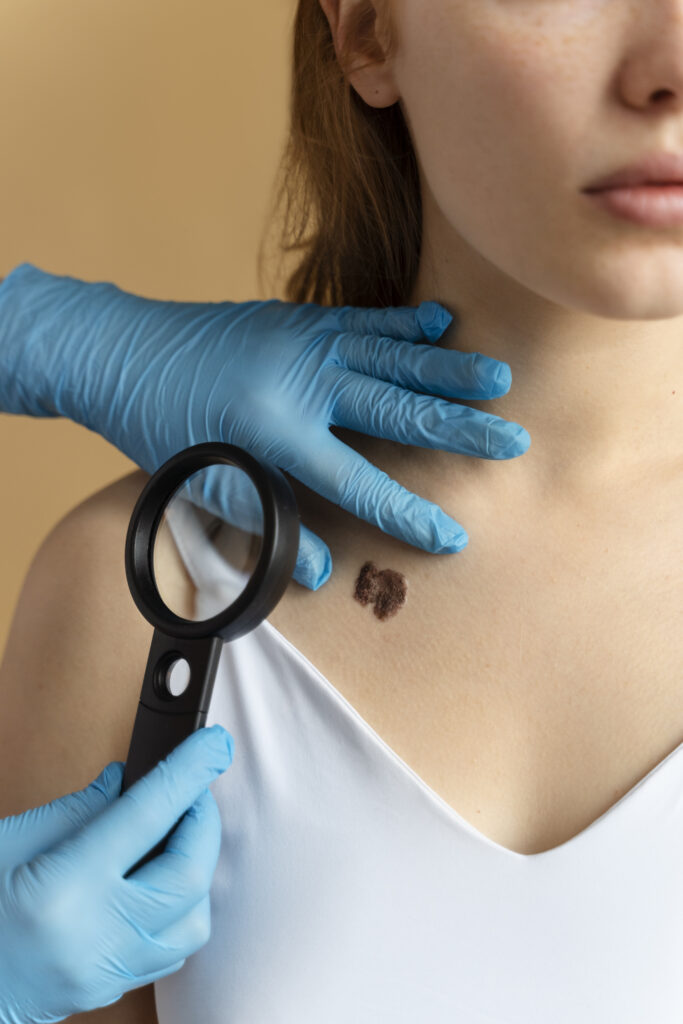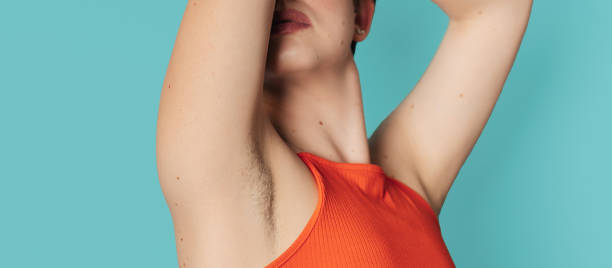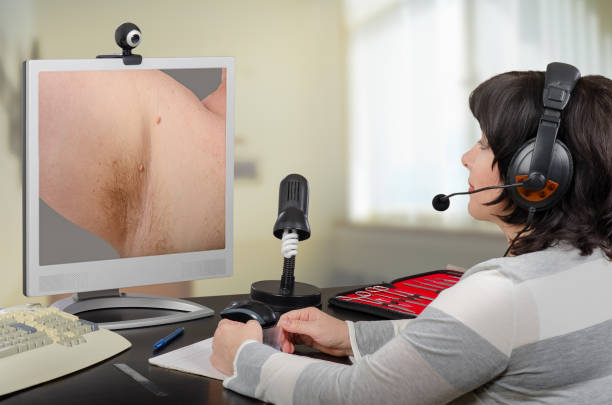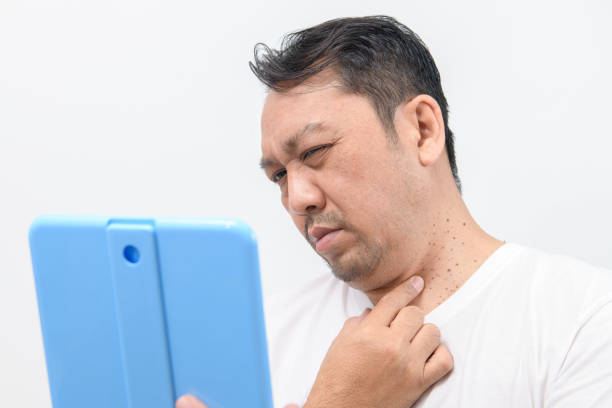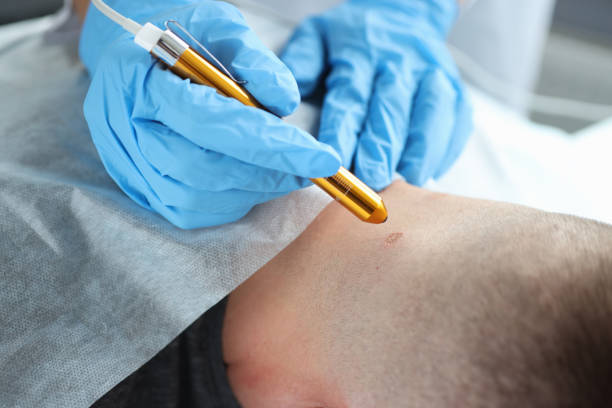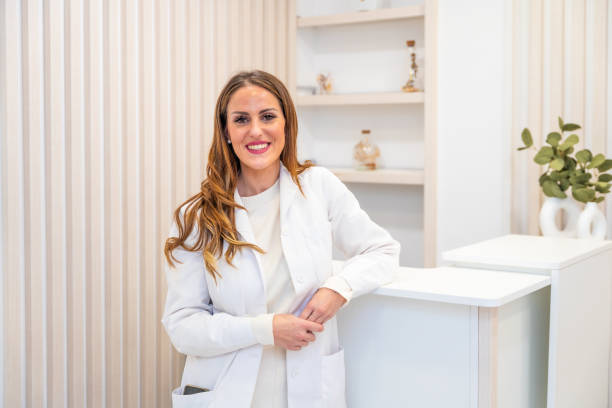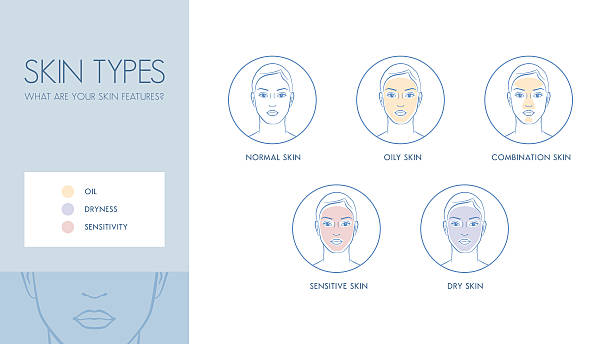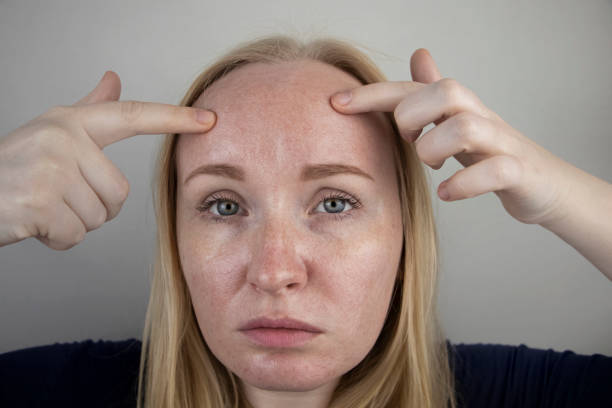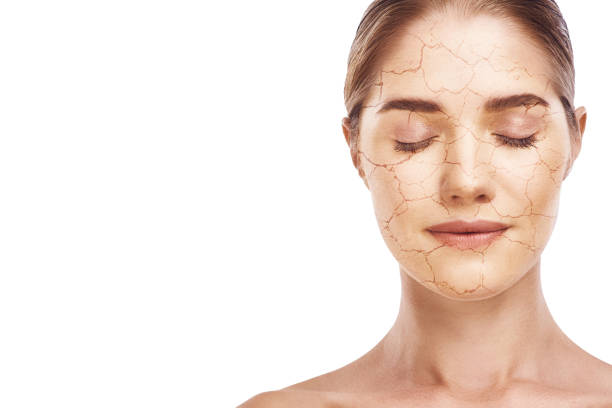Why Choose Professional Cyst Removal Treatment for Safe Results”
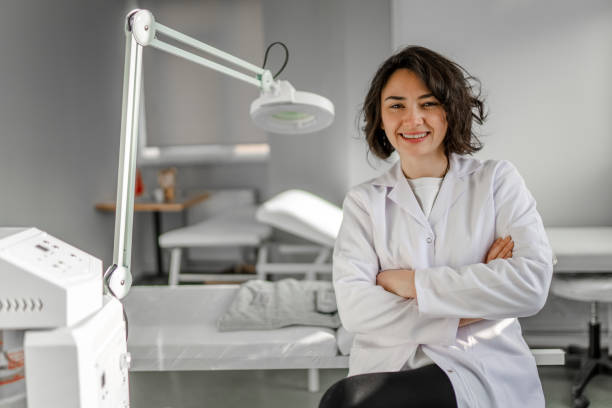
Can You Treat Cysts Yourself at Home? Dealing with Risks vs. Going to a Professional Cyst Removal
Cysts are a common type of skin problem: they are small, generally painless lumps under the skin that can be treated with professional cyst removal treatment.. Squeezing or draining cysts at home may bring about severe health problems. If you’ve ever wanted to try DIY cyst removal or wondered about professional treatment, you're not alone!
In this article, we will investigate the hazards of removing a cyst yourself, explain why getting professional cyst removal is the best and describe what to expect when you visit a clinic. Handling cysts correctly can keep you safe from pain, infection and permanent marks.
Let’s examine what takes place when you handle a cyst on your own—and see why an expert is always the better option.
What Will Happen If You Remove a Cyst Yourself?
Home remedies for removing cysts seem fast and simple, but they can generally make the situation worse. A cyst is an enclosed sac containing fluid, pus or different materials. If you do not have proper tools, knowledge or ways to sterilise, you could injure yourself while trying to remove it on your own.
The Most Common Problems With Home Cyst Removal:
If you use tools that haven’t been sterilised or touch the cyst, bacteria can enter the skin, resulting in redness, swelling, pus and inflammation.
A complete removal of the sac lining is needed to avoid the cyst from coming back. DIY processes tend to miss some cysts, which can cause it to grow back again.
If you squeeze or cut a cyst by yourself, you might damage the area and leave a permanent mark.
Misdiagnosis: Some lumps you find might not be just cysts. Something you think is a cyst could actually be a lipoma, an abscess or a very rare type of tumour. Only a healthcare professional can correctly diagnose a disease.
Rupturing a cyst with incomplete drainage can drive the content of the cyst deeper into your skin, causing infection and sometimes requiring surgery to drain an abscess.
Even though tutorials and over-the-counter products claim easy results, they cannot replace the accuracy and safety found in a clinic. Even if the cyst is small, it should be treated with sterile methods and proper care afterwards to prevent problems.
If you’re thinking about removing a cyst, it’s always a good idea to see a professional for both your peace of mind and a proper recovery. A specialist is able to remove the mole safely and completely, and will leave behind less scarring.
What is Professional Cyst Removal?
Cyst removal treatment from a professional is a reliable way to remove a cyst from the skin or deeper tissues safely. Professionals perform this treatment in a sterile clinic, which guarantees accuracy, safety and good results in the long run.
A Brief Account of How Professionals Remove Cysts
1. Evaluation and Diagnosis: A healthcare professional will check the lump to make sure it’s a benign cyst and not something more serious. They can perform a visual check or run imaging tests when needed.
2. To provide comfort, the area will be numbed with a local anaesthetic just before the procedure.
3. Most often, the cyst and its sac are carefully taken out through a small cut. This is done to prevent another outbreak.
4. Sometimes, your doctor will close the wound with sutures, clean it properly and cover it with a sterile bandage for healing.
5. You will get instructions on how to care for the area, ease your pain and avoid infection or scars.
Reasons to Choose Professional Cyst Removal Treatment:
- Taking out the cyst as well as the sac where it is found
- Scars are reduced when the right methods are used.
- A low risk that the infection will happen again
- Identifying what the growth is
- Immediate recovery and skilled follow-up care
Going for professional cyst removal puts your health and the safety of your skin first. Most of the time, the procedure is over in 30–60 minutes, and recovery is easy if you follow the doctor’s instructions. If you experience a cyst that is painful, growing or noticeable, meeting with a specialist is the best and safest way to manage it.
Is It Possible to Remove Cysts on Your Own?
Even though it might look easy, home remedies for removing a cyst are very risky. A lot of people believe that draining a cyst is easy, but it can cause problems and sometimes harm the skin permanently.
Reasons Why Home Removal Can Be Dangerous:
Having a cyst removal with unsterilised instruments can introduce bacteria and cause more infection, abscesses and increased swelling.
• Partially Complete Removal: Home methods usually do not eliminate the wall of the cyst. When the sac is left behind, the cyst frequently returns, this time bigger and hurting more.
It’s possible that what you think is a cyst might actually be another skin problem. Removing a cyst yourself may mean hesitating in getting proper treatment.
• If techniques are not done correctly, they can result in skin tears, heavy scarring and alter the skin’s quality for a long time.
Popular DIY Strategies and the Problems They May Cause:
• Squeezing or popping a cyst can cause the infection to spread and lead to inflammation.
Not only does needle drainage hurt, but it only removes the fluid, meaning the sac remains to promote regrowth.
• Examples of home remedies include warm compresses and essential oils, which might help reduce surface inflammation but won’t treat the problem inside the cyst.
When You Must Never Try DIY Removal:
• The cyst can be painful, get red or have pus
• It is developing rapidly or forming in a new way
• It’s close to a sensitive part like the eyes or genitals
• You have a lowered immune system or a skin problem
If you are uncertain, it’s best to stay away from taking action. It is better to get your cysts treated by specialists who have the knowledge and experience to treat them safely.
The Problems with At-Home Or Professional Cyst Removal
Even though taking care of a cyst at home may seem like a good idea, there are big dangers involved. Using the wrong tools, not being properly trained and working in an unsterile area could actually harm your patients.
1. A high possibility of infection
Bacteria can easily enter the procedure if you use unsterile equipment or do not wash your hands before touching the area. A fever with swelling, redness or pus, along with an infection, often means you will need antibiotics or emergency care.
2. Incomplete Removal
Keratin or fluid is held in a sac beneath the skin by a cyst. Just popping or draining a cyst at home won’t remove the cause of the problem. Because of this, there is a strong chance the cyst will return, often larger and more uncomfortable.
3. Scars and skin wounds
People often make improper incisions or tear the skin during a DIY removal. It increases the risk of you getting permanent scars or keloids. Doctors perform cyst removal using methods that protect tissue and encourage a cleaner recovery.
4. Misdiagnosis
A lump in the breast could be a problem, and not just a cyst. Sometimes, it’s a lipoma, an abscess or, in unusual cases, a growth that should be biopsied. If you don’t see an expert, you might not realise a serious condition that needs immediate attention.
5. Bleeding and pain.
The doctor will cut into the skin to remove a cyst. Removing the cyst yourself can result in bleeding that you can’t stop and a lot of pain, especially if the cyst is deep or next to nerves or blood vessels.
There are many reasons why having your cysts removed by a professional is safer.
You can be sure you’re getting a safe and sterile procedure when you opt for professional cyst removal. Every step at clinics like Revitalise London, your comfort and both your safety and skin health are cared for. This approach helps prevent problems and results that won’t last.
When should you visit a doctor to have a cyst removed?
When your symptoms are unusual or more severe, it’s very important to see a doctor for a cyst. With some cysts, it’s okay to wait, but others can become more serious if treatment is delayed.
1. If the Cyst Hurts or Begins to Grow
An enlarged or painful cyst is likely to be infected or undergoing inflammation. Based on these signs, you should start thinking about getting professional cyst removal. If you don’t treat it, it can cause the skin to tear, fill with pus or be damaged over time.
2. Having an Infection
Cheque for areas that are red, warm, have pus, are swollen or are feverish. An infected cyst shows these symptoms, so a doctor should see it. At-home treatment of it could cause the infection to spread more widely.
3. Cysts In Sensitive areas
Cysts that develop on or near the eyes or in the genitals should never be treated at home. Scarring, nerve problems and complications are much more likely in these spots. A cyst removal performed by a seasoned healthcare provider will be done safely.
4. Recurring Cysts
If the cyst returns, chances are you didn’t remove the whole sac originally. A professional can remove all of the lining to keep the cyst from growing back.
5. Cosmetic Concerns
A number of people request removal when the cyst changes their self-esteem or how they look. When a cyst is removed by a professional, it is done with less scarring and a more planned result.
6. Uncertain Diagnosis
If you aren’t sure if what you feel is a cyst, you should talk to a doctor. Your doctor might suggest getting an image or biopsy to check for other diseases.
Our skilled team at Revitalise London uses modern, gentle methods to take out your cyst accurately. We assist you in relaxing and enjoying improved skin health using safe techniques.
What Happens If You Try to Remove Cysts at Home vs. Professional Cyst Removal
It’s possible to remove cysts at home, but this can be dangerous and lead to complications which cyst removal by a professional avoids.
The Risks of At-home Procedure Vs Professional Cyst Removal
- Infection: The risk of getting diseases that can spread increases if tools and the area aren’t sterilised before surgery.
- Many times, people who remove cysts themselves don’t get rid of the whole sac, which can cause it to grow again or become more inflamed.
- When done incorrectly, these techniques can harm your skin, leave scars and sometimes injure your nerves.
- Cutting or squeezing a cyst can cause serious bleeding and much pain when anaesthesia or aftercare is not provided.
- Home treatment may cause you to ignore a cyst if it is a more serious condition.
Why You Should Have Your Cyst Removed by a Professional
- Sterile Workspace: Clinics always make sure their tools are sterilised so infections do not occur.
- Professionals make sure the whole cyst sac is removed, so the cyst can’t return.
- During local anaesthesia, the area is not painful during the procedure.
- Skilled work decreases the appearance of scars while improving how the body heals.
- Medical specialists analyse the kind of cyst and choose the best approach for removal.
Doing surgery on your cysts can create problems that need serious medical management. If you want safe, effective and lasting results, it’s best to have cysts removed by a professional.
We use both our skills and modern techniques at Revitalise London to safely remove cysts that fit your skin well.
Why You Shouldn’t Remove Cysts at Home vs professional cyst removal
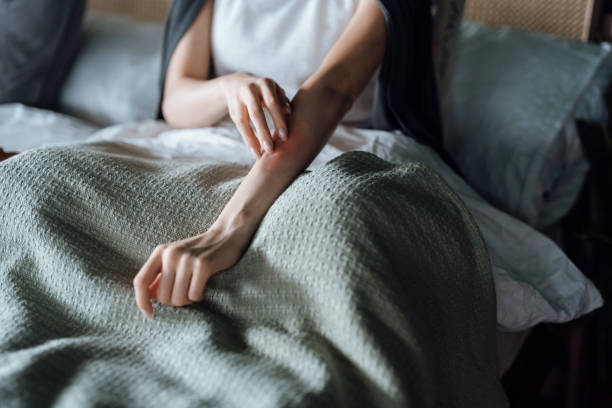
How is a professional cyst removal performed?
A lot of people ask if they can take care of cysts at home. Even though it is possible to remove cysts on your own, there are major risks.
Problems with home removal
Lack of clean tools and a clean place to work makes home removal much more likely to cause infection, with serious consequences.
- Unfinished Removal: Cysts contain a sac just beneath the skin. If you don’t get the cyst totally removed, it is likely to come back or get worse.
- Unsafe Technique: If you don’t know what you’re doing, you could cause cuts or damage to the nearby tissues.
- Anaesthesia is important to avoid painful bleeding, as experience can lead to big problems in such situations.
What is the Benefit of Professional Cyst removal?
- All clinics at Revitalise London use medically approved sterilisation to stop the spread of infection.
- Experienced practitioners take out all of the cyst sac to cut down on the risk of it happening again.
- You will feel no pain during the procedure, thanks to the local anaesthesia.
- A professional can check the cyst and confirm it is not dangerous, helping you relax.
- After your procedure, you receive advice and help to encourage fast healing and avoid complications.
- The best way to deal with cysts is to have them removed professionally because it’s safer, gives better results and looks better afterwards.
What Should You Expect When During Professional Cyst Removal
If you choose cyst removal with a doctor, learning what will happen can alleviate your concerns.
Initial Consultation
The first step for your practitioner is to analyse the cyst, noting its size, where it is and the symptoms you have. By doing this, doctors can choose if a skin lesion should be surgically removed, drained or treated with a laser.
Preparation
The area is sanitised and cleansed before starting the procedure. A numbing anaesthetic is given to the area to make sure the patient feels comfortable.
The Procedure
The type of cyst you have determines the most effective technique.
- With surgery, the cyst and its sac are removed very carefully so as not to harm the surrounding skin.
- If a cyst is infected, the practitioner will open it to allow the pus to drain before removing the sac.
- Sometimes, a controlled laser is used to remove the cyst with only minor damage caused.
Tolerance Levels
Removing most cysts takes only about 30 minutes. Because of local anaesthesia, the procedure is not painful for patients.
Aftercare Instructions
Your doctor will offer specific advice about caring for your wound, warning signs of infection and when you need to go back for another appointment.
When you have cysts removed by a professional, you are safer, the risks are lower, and your healing process is better.
Differences between Home and Professional cyst removal
A lot of people want to get rid of cysts at home to avoid going to a clinic, yet this option can be quite dangerous.
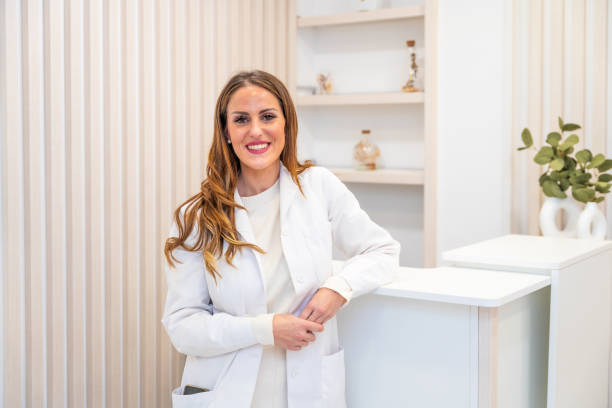
The Risks of Removing at Home
Squeezing or cutting a cyst yourself may cause various problems.
- Bacteria can enter the body through improperly clean hands and equipment, which can cause severe infections.
- If the procedure is not done carefully, it can badly affect the tissues nearby and cause noticeable scars.
- If even a small amount of the cyst sac is left, it could come back or get worse.
- If you cut yourself without proper care, bleeding may occur without stopping.
Why is it safer to have professional cyst removal?
Choosing to have cysts removed by a professional can reduce your chances of having problems. Experienced people in the field use clean tools and techniques to safely and completely remove the lesion.
Taking care of a cyst with professional care reduces scarring and helps prevent it from coming back. Revitalise London, among other clinics, creates a recovery plan tailored for your cyst’s position and type so that you can recover more safely and quickly. If the cyst is uncomfortable, full of pus, growing quickly or close to a sensitive body part, don’t try to remove it at home. Always talk to a professional before making any decisions.
Why Should You Rely on Revitalise London for Professional Cyst Removal
We put your safety and comfort first at Revitalise London by providing expert cyst removal treatments designed for you. Because our specialists are trained in Britain, they use the best methods and equipment to offer quick, painless treatments that result in little scarring. We assess your cyst in detail and advise you about the best method for removing it, depending on your skin and daily life. Revitalise London ensures personal care and reliable aftercare to help patients achieve great and durable results from their cyst removal. For your peace of mind and the best treatment for your skin, pick us.


